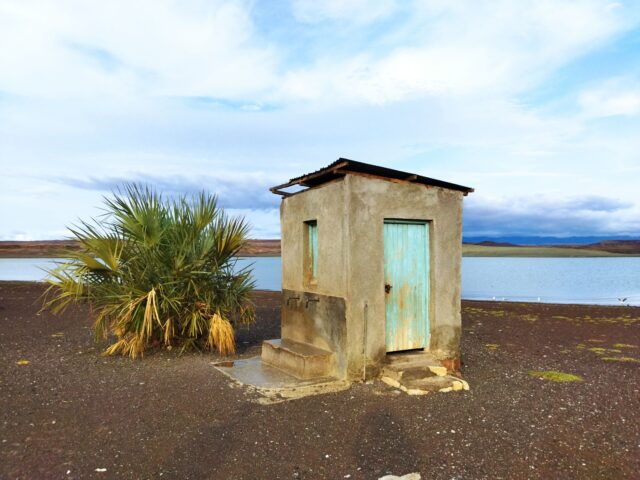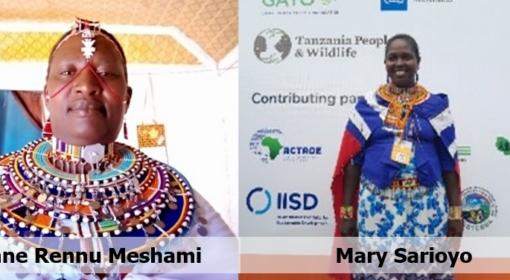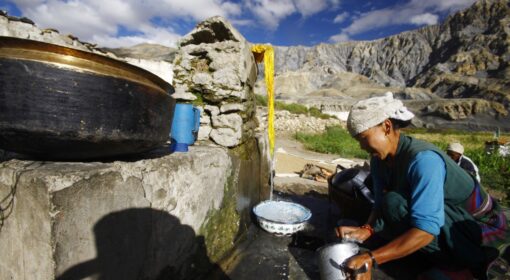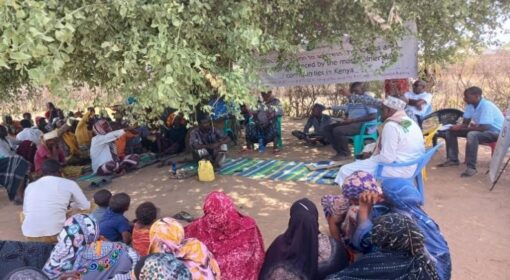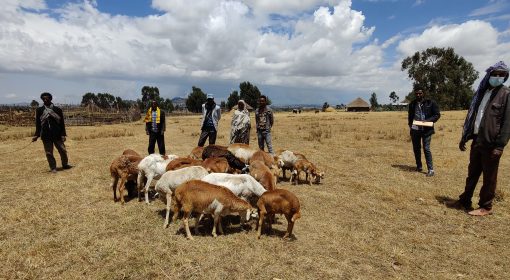By Esmee Mulder (MetaMeta)
This blog is part of a dossier on locally-led adaptation, featuring insights and lessons from the Reversing the Flow (RtF) program. RtF empowers communities in Bangladesh, Burkina Faso, Ethiopia, Kenya, and Sudan to build climate resilience through direct funding and a community-driven, landscape approach.
Formal or functional? Can committees work?
Reflecting on community-based natural resource management in Northern Kenya
Committees and structured groups form a major part of community-based development approaches and decentralized governance systems. In the water sector there are Water Resource User Associations (WRUAs), in the natural resources sector there are Natural Resource Management Committees (NRMCs), in pastoral landscapes there are Grazing Committees (GCs), and in women-enterprises there are organized women groups with at least the position of a chair, secretary, and treasurer. The rational is, that if there is a well identified entity in a community with clear roles, it is easier to work together with such groups to implement projects and govern at local scale. These groups are often the “beneficiaries” to NGO projects and receive capacity building trainings, or participate in workshops. It helps with the gender quota too, ensuring there is: (1) an equal gender balance in newly formed groups, (2) that at least X-amount of women are included, or (3) that the group composition is fully female.
From an “international development” perspective, there are many benefits regarding organizing such groups according to a formal structure, for example: (1) It makes communities more understandable for outsiders; (2) It becomes easier to roll out projects over many communities by targeting formalized groups such as WRUA’s and Grazing Committees; (3) It supports in transparency due to positions like secretary and treasurer which are aimed to have clear responsibilities.
Many projects in which these groups are targeted, aim for decentralized governance (community-led/ community-based). The same type of projects often strive towards community ownership. Yet, the question is, for whom exactly is such formalization convenient? Who decided that such roles and structure are required? Do formalized groups with positions like chair, vice-chair, secretary, vice-secretary, and treasurer, resonate with leadership structures and decision-making approaches in those communities? Does at times, formalization according to this formal (sometimes bureaucratic) approach, potentially lead to less ownership?
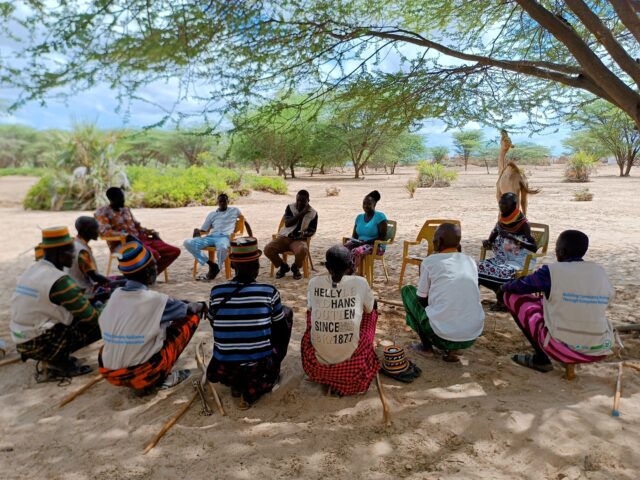
To provide an example, let us move to the far north of Turkana County in Northern Kenya. Rangeland health is considered to be a major issue in this area, and a grazing committee meets to share more on this topic. They explain in their mother tongue (Turkana language) how they manage grazing in the area. This committee has been set up as one of the requirements for an NGO project to support them on reseeding the rangelands. One of the women shares in Turkana how her role in the group is “vice secretary”. Though the conversation is in Turkana, these two words are in English. The traditionally nomadic pastoral community does not have a word for vice secretary – or at least, it is not used in this setting. It makes one wonder why this role was instituted in the first place. How must people feel “ownership” if they are following a structure with roles and responsibilities which are not familiar?
Though it is not being argued to do away with these roles, committees, and formalized groups all together, it is argued that we should reflect on why such systems are being put in place, how, by whom, and for whom. Are there ways that the organization of decision making and project implementation in communities, can be done in a more co-designed way? Can it be done in a way that resonates with existing decision-making approaches? Can it be done in a way that community members feel confident and familiar enough to contribute to the formation, design, and responsibility identification of these groups – not just those with high formal education, but also those without?

An example of exploring such a different approach of organizing natural resource management at community level, is from the El Molo community in Marsabit County, in Northern Kenya. This community was receiving financial and technical support to access clean drinking water. The water would come into the community through a water truck to fill up the two tanks in the villages. Though the water is for free, the fuel of the truck and the truck driver need to be paid for. As any water system, some form of management is required to keep it up and running. However, instead of setting up a formalized, registered committee to do this, the management system was created through several community meetings. The management approach was designed through a series of questions. These questions were based on potential scenarios, and “walking” with the community members through what the water provision will look like. For example:
Facilitator: How will the water truck know when to come?
Community Member(s): We will call the driver.
Facilitator: Who is we?
Community Member(s): Person X and if he is not available, then person Y will do it [roles and responsibilities number 1]
Facilitator: How will you know the water tank is empty?
Community Member(s): Person X will check the level of the water tank every other day [roles and responsibilities number 2]
Facilitator: How will the truck driver get paid?
Community Member(s): Person Z will pay the truck driver after 10 trips. [roles and responsibilities number 3]
Facilitator: How will person Z know that 10 trips have been made?
Community Member(s): Person X will write down in this book ever time the water truck comes by, including the date. [roles and responsibilities number 4]
Facilitator: What if person Z decides to use the money in the community account for his/her own purchases?
Community Member(s): Every 3 months we will revise the mpesa (mobile money) statement of the account and compare that to the water trucking records [roles and responsibilities number 5]
Etc. etc.
The point of such a meeting is, that the roles and responsibilities are identified based on the needs which have come up, when walking through the water trucking process. Instead of having pre-identified roles and explain what the responsibilities are, the community members identify the roles and responsibilities themselves. As such, a “water group” (words used in local language) was created to ensure the management of the water supply would go smoothly. As the community members have identified the need for such tasks and roles, the responsibilities resonate with them. They did not ask to get paid to conduct these roles (what often becomes the case with more formalized positions), as it was seen as a logical requirement to ensure the water would continue to come to their community. Since the scenarios were walked through by everyone carefully, the community members could think along the lines of solutions which makes sense for them and which they know will work in their environment.
Though ultimately the process above is still the formation of some sort of committee, it is different than setting up a formalized WRUA for example. A WRUA needs to be registered at a government office, needs to fulfill X-number of requirements, meets X-number of times a month, and takes meeting minutes etc. Ofcourse, there are many benefits of such a system, particularly when it involves large funding schemes. However, in not all cases such a formal WRUA is necessary, realistic, or desired. A more informal design through a community meeting may be considered in such cases.
